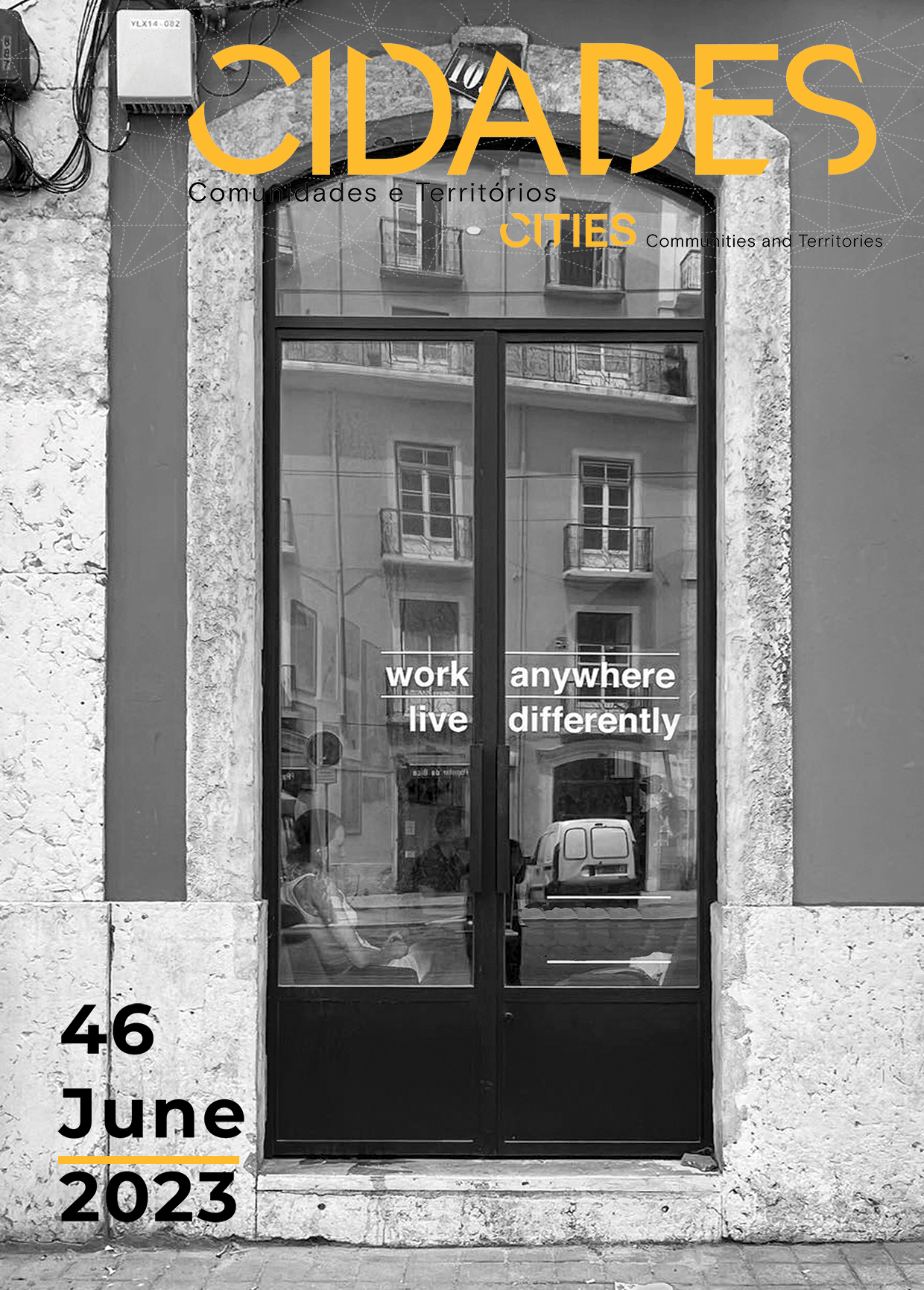Transforming work environments: unveiling the dynamics and impacts of coworking spaces
Keywords:
coworking, COST Action CA18214, territorial dynamicsReferences
Bosworth, G., Whalley, J., Fuzi, A., Merrell, I., Chapman, P., & Russell, E. (2023). Rural co-working: New network spaces and new opportunities for a smart countryside. Journal of Rural Studies, 97, 550–559. https://doi.org/10.1016/j.jrurstud.2023.01.003
Ciccarelli, F. (2023). Exploring the potential of coworking spaces for quality of working life and wellbeing: a systematic review of academic literature. CIDADES, Comunidades e Territórios, 46.
Gandini, A., & Cossu, A. (2019). The third wave of coworking: ‘Neo-corporate’ model versus ‘resilient’ practice. European Journal of Cultural Studies, 136754941988606. https://doi.org/10.1177/1367549419886060
Kojo, I., & Nenonen, S. (2016). Typologies for co-working spaces in Finland – what and how? Facilities, 34(5/6), 302–313. https://doi.org/10.1108/F-08-2014-0066
Mariotti, I., Bednář, P., & Di Marino, M. (2022). The COVID-19 Pandemic and the Future of Working Spaces (1st ed.). Routledge. https://doi.org/10.4324/9781003181163
Mariotti, I., Pacchi, C., & Di Vita, S. (2017). Co-working Spaces in Milan: Location Patterns and Urban Effects. Journal of Urban Technology, 24(3), 47–66. https://doi.org/10.1080/10630732.2017.1311556
Mavitan, M.P., Baycan, T. (2023). Types of co-working spaces in Istanbul. CIDADES, Comunidades e Territórios, 46.
Mendez-Ortega, C., Micek, G., & Malochleb, K. (2022). How do coworking spaces coagglomerate with service industries? The tale of three European cities. Cities, 130, 103875.
Merkel, J. (2015). Coworking in the city. Ephemera, 15(2), 121–139.
Tomaz, E., Moriset, B., & Teller, J. (2022). Rural coworking spaces in the COVID-19 era. A window of opportunity? In I. Mariotti, M. Di Marino, & P. Bednář (Eds.), The COVID-19 Pandemic and the Future of Working Spaces. Routledge.
Tomaz, E., Henriques, C. (2023). The evolution and spatial dynamics of coworking spaces in Lisbon. CIDADES, Comunidades e Territórios, 46.
Tomaz, E., & Tabrizi, H. A. (forthcoming). The evolution of non-traditional workplaces: From third places to hybrid places. In I. Mariotti, E. Tomaz, G. Micek, & C. Mendez-Ortega, Evolution of New Working Spaces: Changing nature and geographies. SpringerBriefs in Applied Sciences and Technology.
Vogl, T., & Akhavan, M. (2022). A systematic literature review of the effects of coworking spaces on the socio-cultural and economic conditions in peripheral and rural areas. Journal of Property Investment & Finance, 40(5), 465–478. https://doi.org/10.1108/JPIF-12-2021-0108
Waters-Lynch, J., Potts, J., Butcher, T., Dodson, J., & Hurley, J. (2016). Coworking: A Transdisciplinary Overview. SSRN Electronic Journal. https://doi.org/10.2139/ssrn.2712217
Downloads
Published
Issue
Section
License
Copyright (c) 2023 Elisabete Tomaz, Cristina Henriques, Chiara Tagliaro, Uglješa Stankov

This work is licensed under a Creative Commons Attribution-NonCommercial-NoDerivatives 4.0 International License.
Cidades, Comunidades e Territórios by DINÂMIA'CET-IUL is licensed under a Creative Commons Atribuição-Uso Não-Comercial-Proibição de realização de Obras Derivadas 4.0 Unported License.Permissions beyond the scope of this license may be available at mailto:cidades.dinamiacet@iscte.pt.






